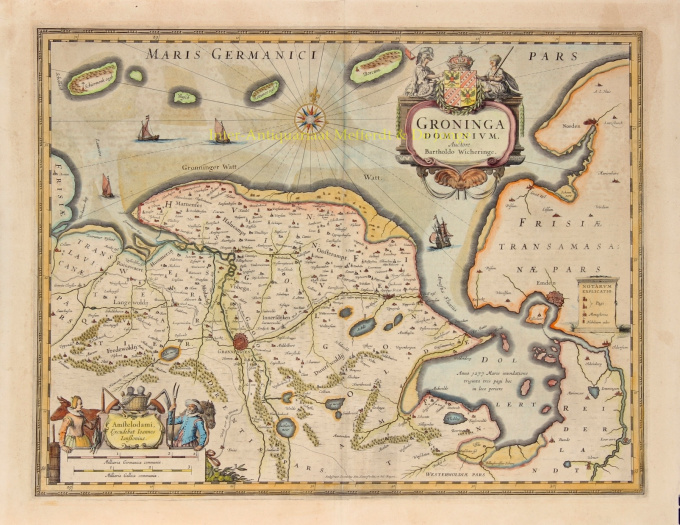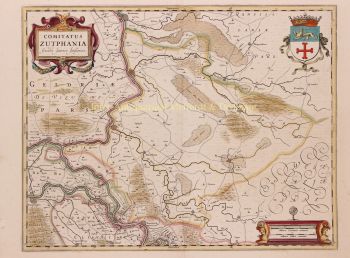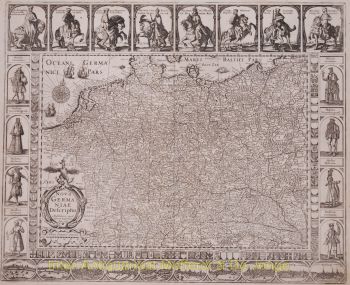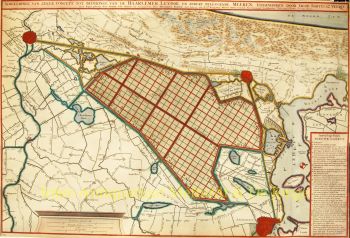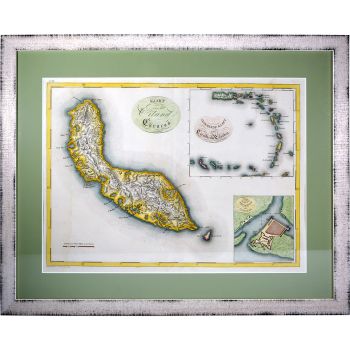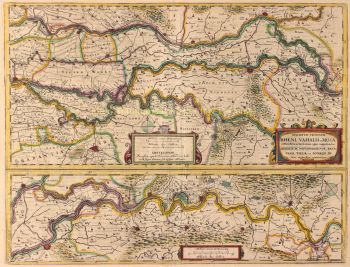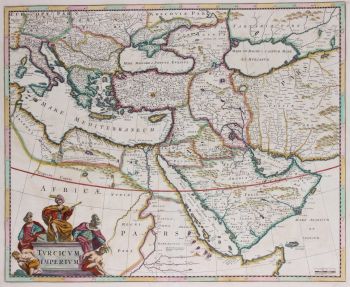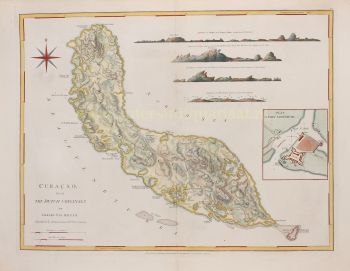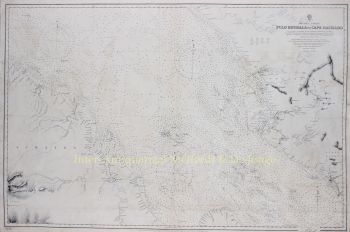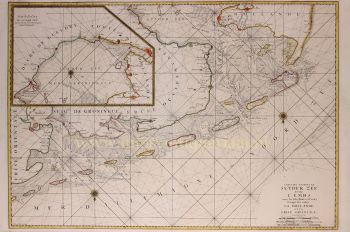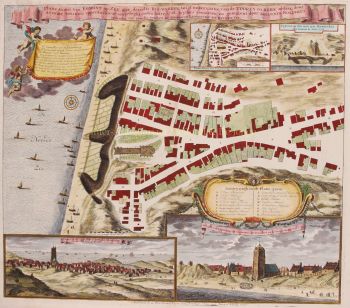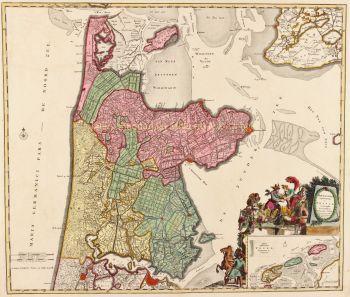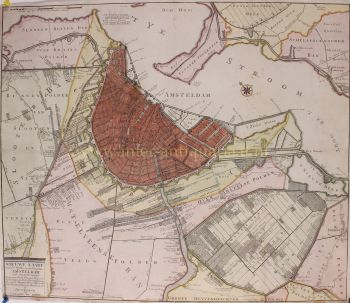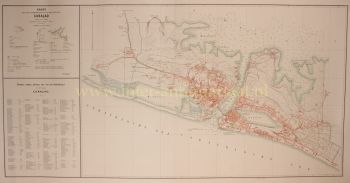Groningen en Ommelanden 1633
Johannes Janssonius
Currently unavailable via Gallerease
- About the artworkGRONINGEN EN OMMELANDEN "Groninga Dominium. Auctore Bartholdo Wicheringe." Kopergravure van de stad Groningen en Ommelanden gegraveerd door Evert Symonsz Hamersveldt en Salomon Rogiers, uitgegeven door Johannes Janssonius te Amsterdam in 1633. In de tijd met de hand gekleurd. Afm. 38 x 49,5 cm. De kaart werd oorspronkelijk gepubliceerd in de bij de uitgeverij van Henricus Hondius en Johannes Janssonius verschenen Franstalige "Atlas" en in hun "Appendice De L'Atlas". De kaart is gebaseerd op de grote wandkaart uit 1616 van de Groningse raadsheer en incidenteel cartograaf Barthold Wicheringe. Tot ver in de 18de eeuw vormde diens kaart het model voor alle andere kaarten die van Groningen verschenen. We zien rechtsboven het provinciewapen. De kaart is uitgevoerd met een kompasroos en een legenda (Notarvm explicatio) met daarin de dorpen, (voormalige) kloosters en borgen. Op de achterzijde van de kaart staat een beschrijving van La Seigneurie de Groningue. Prijs: Euro750,-
- About the artist
Janssonius was born in Arnhem as the son of Jan Jansz, a printer and publisher there. At a young age he moved to Amsterdam, the then center of the printing and card trade. In 1612 he married Elisabeth Hondius, daughter of Jodocus Hondius. Elisabeth died in 1627 and Janssonius remarried in 1629 with Elisabeth Carlier. He went to work for his father-in-law and continued the publishing business together with Henricus Hondius (son of) after his death. This was developed into one of the largest of its time. There were branches in Berlin, Frankfurt, Geneva, Lyon and Stockholm, among others.
Under Janssonius' leadership, the Mercator-Hondius Atlas was expanded and published as Atlas Novus. This initially one-volume edition soon became a multi-volume atlas, supplemented on request with nautical charts and/or celestial charts. There were publications in Dutch, French, Spanish and Latin. Like his contemporaries, Janssonius also made use of existing copper plates, including those from the city books of Braun & Hogenberg and the Description de touts les Pays Bas (Description of all the Netherlands) by Lodovico Guicciardini - (Cornelis Claesz. edition) from 1609 Although Janssonius has often been accused of copying Willem Blaeu's work, it may be noted that maps by Janssonius also appeared on the market earlier.
After Janssonius' death, the firm was continued by his son-in-law, Johannes (Jan) van Waesbergen, who was married to his daughter Elisabeth Janssonius (1615-1681). Many copper plates of the city books were used (sometimes slightly modified) by Frederik de Wit. The building on Dam Square was leased to Gerard Valck; He also bought a number of printing plates in 1694.
Artwork details
Related artworks
- 1 - 4 / 5
- 1 - 4 / 24

